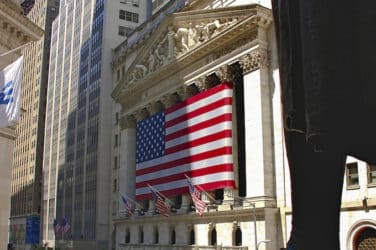
Concerns are growing that Europe’s financial services landscape will be badly scarred if proposed regulatory changes make it to the markets in their current guise.
The legislative proposals for MiFID 2, an update to the European Union’s 2007 Markets in Financial Instruments Directive, which is now being split into two—a directive and a regulation—were published in October last year but interested parties are now beginning to list some major concerns.
“There are numerous proposals [in MiFID 2] that make sense in theory, but prompt difficult questions as to how they can be translated into detailed and practical regulation and implemented on a reasonable timescale,” said David Morgan, marketing director of trading and client connectivity at US-based software company SunGard, which offers traders access to the UK and European markets.
“There are several proposals that, in the view of many participants, could be actively harmful to the markets in their current form.”
Key elements of the MiFID 2 proposals, which are scheduled to come into force next year, are revisions to market structures in an attempt to increase transparency and liquidity in equity markets, a crackdown on algorithmic trading by high-frequency traders and plans to restrict the use of third-party managers.
However, the buy side is concerned that in this drive for greater transparency, unintended consequences may come of it.
“MiFID’s core objective is to protect the interests of the end investor and, at first sight, complete transparency may be perceived as serving those interests,” said Morgan.
“But in reality, the great majority of end investors’ funds are held and traded on a pooled basis by asset management firms, and these buy-side institutions, of course, often deal in large size when pursing their investment strategies.
“In the equity markets, the buy-side preference is therefore often to contain the market impact of large orders by trading in the dark, and against the widest possible range of liquidity. This being the case, MiFID 2’s proposals regarding dark pools have been met with widespread dismay.
“The buy-side’s core request – to be allowed to trade how and where it believes it can obtain the best results for its clients – appears not to have been acknowledged in the current proposals.”
Morgan also says that MiFID 2 proposals have not properly dealt with the lack of a consolidated tape that was missing from the original 2007 MiFID directive.
“The buy side has maintained that truly damaging market opacity arises from the lack of a consolidated tape of post-trade prices,” he said.
“MiFID 2 proposals have addressed this issue, albeit with a proposal for multiple, commercially competing providers. What is missing is a visible push to address the commercial challenges involved in obtaining pan-European post-trade data, in real time, at an appropriate price.
“To achieve this objective, post-trade data will have to be unbundled and sold separately from pre-trade quotes, at a much lower price: this is clearly a difficult issue for exchanges for whom market data revenues have become a vitally important revenue source in recent years, as equity market volumes have dwindled.”
And the clamour by European politicians to clamp down on high-frequency trading firms that employ algorithms as part of liquidity provision strategies through MiFID 2 may also have unintended consequences, according to Morgan.
“The Commission wishes to place obligations on the HFT fraternity to make markets at all times, under all conditions,” he said. “One can appreciate why this might be desirable, but the term ‘algorithmic traders’ clearly takes in a much broader group—not only other ‘black box’ traders, but also those using conventional execution algorithms (icebergs, volume-weighted average price and so on) to divide large orders.
“To date the Commission, while acknowledging that its proposals may need to be ‘improved’, has refused to acknowledge the distinctions between these different categories of algorithmic trading.”
Morgan believes that the 2013 timescale for MiFID 2 is “unlikely to be met” and suggests that 2015 could be a more probable start date.
In the meantime, Morgan added: “The implication is that we will be living with the current MiFID environment in equity markets for some time to come. We are likely to see continuing fragmentation of liquidity as market participants’ business models evolve.
“Changes will probably be most marked in those markets that have lagged the leaders in this respect – notably, but not only, Spain – as competitive and regulatory pressure builds.”






